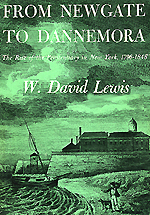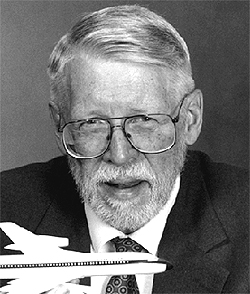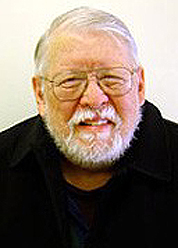xxx

xxx
NYCHS presents excerpts from From Newgate to Dannemora: The Rise of
the Penitentiary in New York, 1796-1848, by W. David Lewis.
Copyright © 1965 by Cornell University; copyright renewed 1993.
Used by permission of the author and the publisher, Cornell
University Press. All rights reserved. Click on image, based on book jacket front cover, to access Cornell University Press site.
|
|
PREFACE
(Excerpted from Pages vii through x.)
. . . . In this study I have traced the development of correctional
policies in a key state during a critical era in the history of American reform movements.
Starting with the adoption of its first
modern penal code in 1796, New York for a time followed the lead
of Pennsylvania in the treatment of offenders but during the
1820s it became a significant innovating force in its own right by
devising the Auburn system of penitentiary discipline widely acclaimed and copied throughout the United States and abroad.
The
various features of this system reflected to a considerable degree
the needs, fears, and attitudes prevailing in New York at the time
of its adoption; as conditions changed in later years a number of
modifications were made, thus providing an interesting record
of interaction between a given mode of institutional operation
and the environment in which it was developed.
By the late 1840s,
however, the impulse for prison reform had waned, and methods
that were increasingly outmoded continued to be imposed upon
most adult convicts for the rest of the nineteenth century despite
periodic advances in the treatment of special groups of felons such
as first offenders and the criminally insane. A distinct phase of
correctional change had thus come to an end more than a decade
before the Civil War.
.
xxx
 The W. David Lewis image above appeared in a publication announcing the May 4, 1999 lecture by him about WWII hero Eddie Rickenbacker's 1942 disappearance and rescue at sea. The talk at the Virginia Air & Space Center was also sponsored by the NASA Langley Research Center and the Daily Press [Newport News, Virginia] as part of a science and technology series. Events covered in that lecture formed part of the 2005 biography Eddie Rickenbacker: An American Hero in the Twentieth Century by W. David Lewis. Click image for more on it.
|
|
With but few exceptions, professional historians have not been
notably active in studying the evolution of law enforcement and
correction in America. [Author note: This is particularly true in the period of almost thirty years since the appearance of Blake McKelvey’s pioneering work, American Prisons: A Study in American Social History Prior to 1915 (Chicago, 1936). . . . ]
This is unfortunate, because the way in
which a community treats those who deviate from its standards of
acceptable behavior often reveals much about its values and preoccupations. There is a need to interpret public responses to crime
during various periods of our history in the light of broader trends
that were concurrently evident in other fields of human activity.
In this book I have tried particularly to place the formative years
of the Auburn system in a meaningful social context, because the
relative harshness which characterized penal affairs at this time—
contrasting in many ways with the distinctly milder outlook prevailing
both in the post-Revolutionary era and again briefly in the
184o’s -- seemed especially to require explanation.
In seeking to
account for this comparative stringency, I have emphasized the
ways in which conservative reform impulses, prevailing public
anxieties, and desires to produce conformity and social control
helped to create an atmosphere within which a dominantly repressive penal philosophy could take root and flourish. . . .
xxx

Image above, caption below from
Auburn University web site:W. David Lewis is Distinguished University Professor at Auburn University. He received his bachelor's and master's degrees in history at Pennsylvania State University in 1952 and 1954 and his doctorate in American social and intellectual history at Cornell University in 1961. He has taught at Auburn since his appointment in 1971 as Hudson Professor of History and Engineering. He is the author of numerous books, including Sloss Furnaces and the Rise of the Birmingham District: An Industrial Epic. His latest publication is Eddie Rickenbacker: An American Hero in the Twentieth Century (Johns Hopkins University Press, 2005). Click image to access his Auburn U. History Dept. web page.
|
|
I do believe that
the history of prison reform in the period before the Civil War
is relevant in a broad sense to the penal problems of the present
time. Whatever our reactions may be to the methods of those who
devised the Auburn system or the rival plan of complete solitary
confinement adopted in Pennsylvania, we should remember that
these men were trying to deal in a courageous and direct manner
with difficulties arising from the very nature of a penitentiary. . . .
The completion of this book would not have been possible without the aid and encouragement of many persons. . . .
My father, Gordon C. Lewis,
has worked for many years in the fields of law enforcement and
correction, and many of his interests have become mine also. I
would like to thank my brother-in-law and former teacher, Professor Ira V. Brown of the Pennsylvania State University, for first
pointing out to me that the rise of the Auburn system deserved
more study than had previously been given to it. I an under great
obligation to Professor David Brion Davis of Cornell University . . .
Among others who deserve thanks
in this regard are Carroll C. Arnold of the Pennsylvania State University, Walter LaFeber of Cornell University, and Norman B.
Wilkinson of the Eieutherian Mills - Hagley Foundation.
The staffs of various libraries and historical agencies were most
cooperative, including those
connected with the Cornell University Library, the Library of
Congress, the New-York Historical Society, the New York State
Library, the New York State Historical Association, the Morris
Library of the University of Delaware, and the Eleutherian Mills
Historical Library.
|
Table of Contents
|
- [Book jacket blurb, images]
- Preface
- The Heritage
- The First Experiment
- The Setting for a New Order
- The Auburn System and Its Champions
- Portrait of an Institution
- The House of Fear
- The Ordeal of the Unredeemables
- Prisons, Profits, and Protests
- A New Outlook
- Radicalism and Reaction
- Ebb Tide
- Change and Continuity
- A Critical Essay on Sources
|
|
I also appreciate the kindness of Warden
Robert E. Murphy, whose staff provided me with a tour of Auburn
prison and allowed me to inspect two buildings that remained
from the ante-helium period. The Social Science Research Center
of Cornell University at one point aided my investigations with
a travel grant . . . New York History and the New-
York Historical Society Quarterly publish[ed] articles
based substantially upon two chapters of the doctoral dissertation
from which this book has developed.
Finally, my deepest thanks go to my wife, Carolyn, whose encouragement, editorial sense, and typing ability were frequently
called upon and never found wanting.
W. DAVID LEWIS
Eleutherian Mills - Hagley Foundation
Wilmington, Delaware
June, 1964
|
